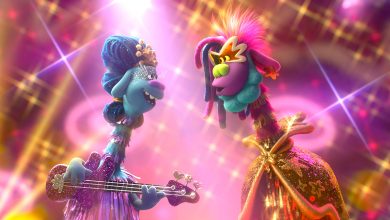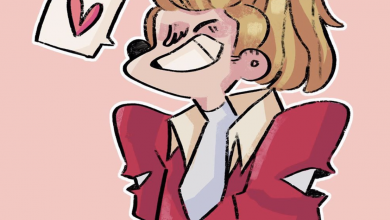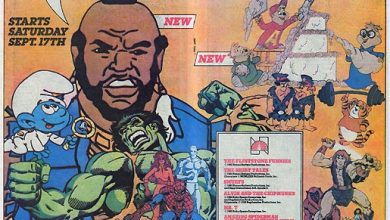TV Review: Daniel Tiger’s Neighborhood

I didn’t mean to watch TV with my 16-month-olds. I realize they’re too young. But, we were all sick, and it was either distract them or run the risk of throwing up on them. So television became my instant best friend. Fortunately, in the process I discovered pretty good program for younger viewers.
“Daniel Tiger’s Neighborhood” focuses on the offspring of the original characters from “Mister Rogers’ Neighborhood:” Daniel Tiger, O the Owl, Katerina Pussycat, Miss Elaina, and Prince Wednesday. Animation has replaced puppetry, and everything moves more quickly, but the overall mood is similar to the old neighborhood, and the pace is still slow compared to the chaos of many children’s programs.
PBS says the program is for children ages 2 to 8. But the New York Times and Common Sense Media say it’s more like 2-4. It was well above the heads of my under-twos, but at the same time it did not over excite them as most television does.

The main character is 4-year-old Daniel Tiger. Daniel is more outgoing than his shy father from the original program. However, as the episodes progress, Daniel’s exhibits similar fears as his father, making their relationship slightly more believable. For example, he worries about going to school in season 1, episode 2 like the young Daniel Striped Tiger in “Mister Rogers’ Neighborhood” did, although it is presented with less depth and at a faster pace the similarities remain.
Family types include: mom+dad, an uncle as guardian, and a single mother. Miss Elaina’s family is multi racial, and Katarina’s family share a tree with O’s, which I suppose means that multi-family homes are represented.
The lack of diverse family models is a disappointment. Because the show doesn’t discuss the children’s family structures, it would be especially easy to include a single dad or two same-gendered parents, and thus help normalize diverse family types.
That said, I liked how family members treated each other and how adults are friendly guides through the challenges the children face. I found this a refreshing and age-appropriate portrayal of the child/parent relationship.
The neighborhood layout is a little hard to envision because no one walks anywhere. This seems like a small detail, but it’s Daniel Tiger’s neighborhood, not Daniel Tiger’s suburban sprawl. In Mr. Rogers’ neighborhood, people walked all the time. While this seems like a small thing, it’s an odd choice by the producers that might seem jarring to parents who used to watch “Mr. Rogers’ Neighborhood.”
The program focuses on social skills and emotional development. I liked how the plots were age-appropriately simple, and focused on a single skill. The interaction between characters as they faced challenges was also nice to see because it modeled appropriate behavior.
As a parent of a child with sensory issues, I appreciate that the program includes a character who requires accommodations: O the owl. In one episode, two characters want to do everything backwards, but O is uncomfortable with that. The episode modeled how O should express his discomfort and how the children could play while accommodating his needs. It’s a good start toward including children with different abilities and needs, but it would be nice to see more central characters who face challenges represented.
One of the things I liked about the program is that it sneakily teaches parenting skills along with toddler social skills, and then introduces catchy songs to help parents remember them. For example, Mom Tiger teaches Daniel a song for handling anger, and then uses the song to calm herself when Daniel ruins the floor.
When Daniel first goes to school, the program teaches parenting skills more overtly. “When we do something new, let’s talk about what we’ll do” sings his mother before explaining to Daniel what he can expect at school, and letting him ask questions. This is clearly meant for parents, since it’s unlikely that children are driving conversations about the new things they’ll experience.
Parenting skills continue through the show’s websites on PBS and The Fred Rogers Company page for parents. Though the program is less nuanced than “Mister Rogers’ Neighborhood,” the songs are catchy and lessons are effective.
Ultimately the show’s characters and age-appropriate nature counter the above issues. But there is one omission that prevents “Daniel Tiger’s Neighborhood” from having the depth and impact of the program on which it is based: the absence of Fred Rogers or his equivalent.
Mr. Rogers was a non-animated, calm, reassuring adult who helped children to see and understand difficult experiences and feelings in a safe space that was also an elaborately structured imaginary world. He gave children an adult to write to with questions, and an adult friend who advised them how to tackle tough situations. Mr. Rogers answered letters from children with care to ensure that children felt valued. Because he was an adult, he could answer questions that a child could not. The 4-year-old tiger at the center of this updated version simply cannot fill that void.
Because of this, “Mister Rogers’ Neighborhood” had an emotional depth that Daniel Tiger’s Neighborhood lacks. However, replacing Mr. Rogers seems be nearly impossible, and his slow pace may not have worked with today’s children. I think the Fred Rogers Company made a good decision in trying not to duplicate the original program, and instead focusing on capturing the spirit of it.
They’ve almost got it with this sweet, simple program that counters the current trend for loud excitement in children’s programming, and hopefully the show will develop into something wonderful over time.




